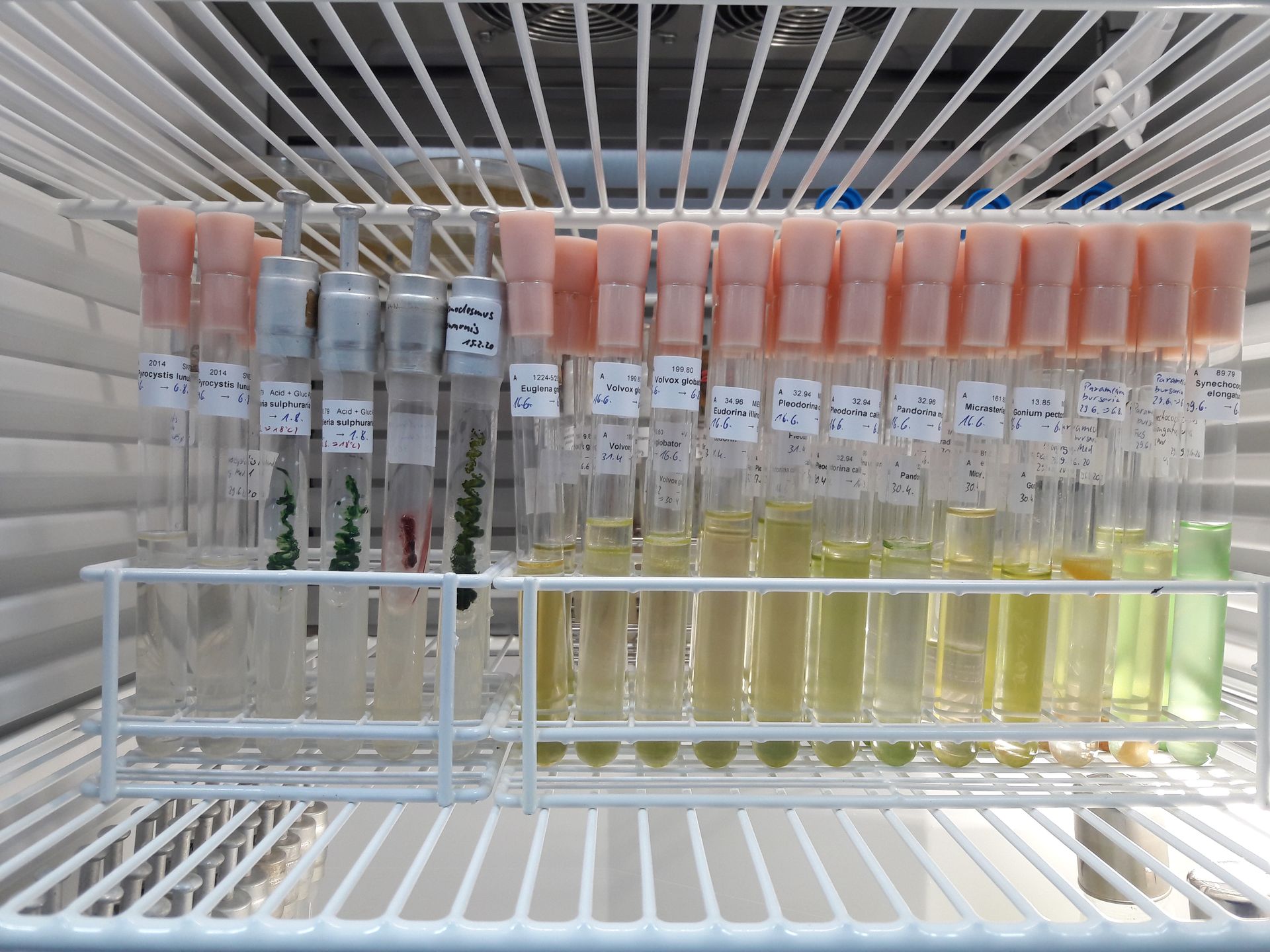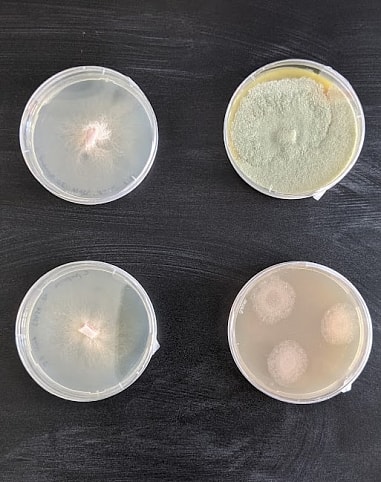Two more sterile cultures of fungi have been established in the student laboratory. Firstly, cultures of the ergot fungus Claviceps purpurea and secondly of Trichoderma reesei.
The ergot fungus, which belongs to the group of Ascomycota, parasitises on grain ears, especially on those of rye. The bluish-black ergot, up to four centimetres long, is a permanent stage (sclerotium) with which the fungus survives the winter. This contains a mixture of several dozen alkaloids, some of which are highly toxic.
In the Middle Ages and early modern times, the consumption of ergot-infested grain caused the so-called Saint Anthony's fire. A person suffering from what is now called ergotism was depicted by Matthias Grünewald on the second reverse side of the Isenheim Altarpiece.
Later, extracts of Sclerotia from Claviceps were used to staunch bleeding after a difficult birth due to their vaso-occlusive effect.
The lines that have now been established are to be analysed for their alkaloid composition as well as for the dyes they contain.
They were made available to us by the working group of Prof. Dr. Humpf from the University of Münster.
Trichoderma reesei belongs to the tubular fungi. It is characterised by a high production of cellulases, i.e. enzymes that break down cellulose, the scaffolding substance of plant cell walls.
The aim here is to isolate these cellulases and then use them for further experiments.
The culture of Trichoderma was made available to us by the working group of Prof. Dr. Agler-Rosenbaum from the Leibniz Institute for Natural Product Research and Infection Biology in Jena.



